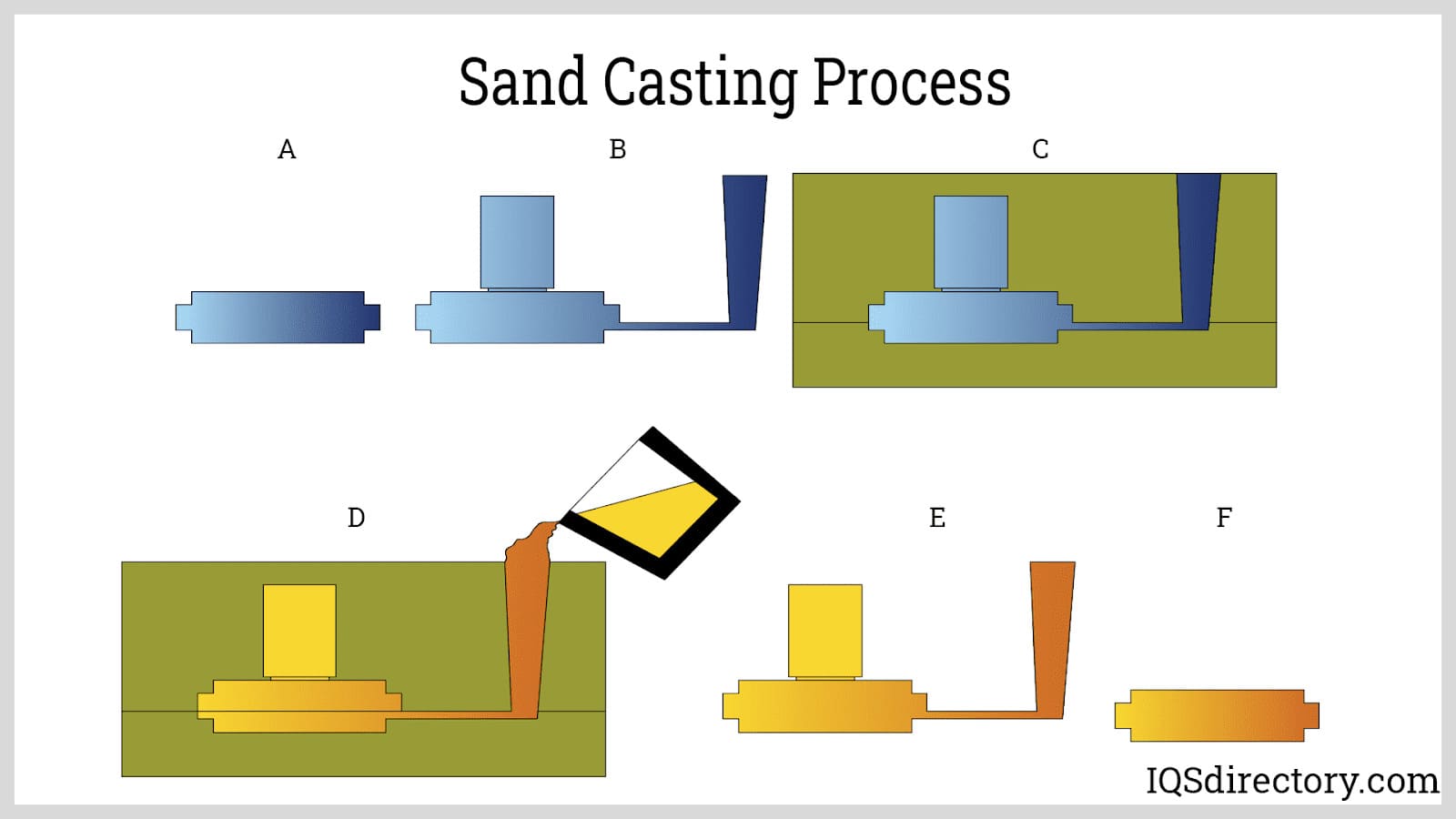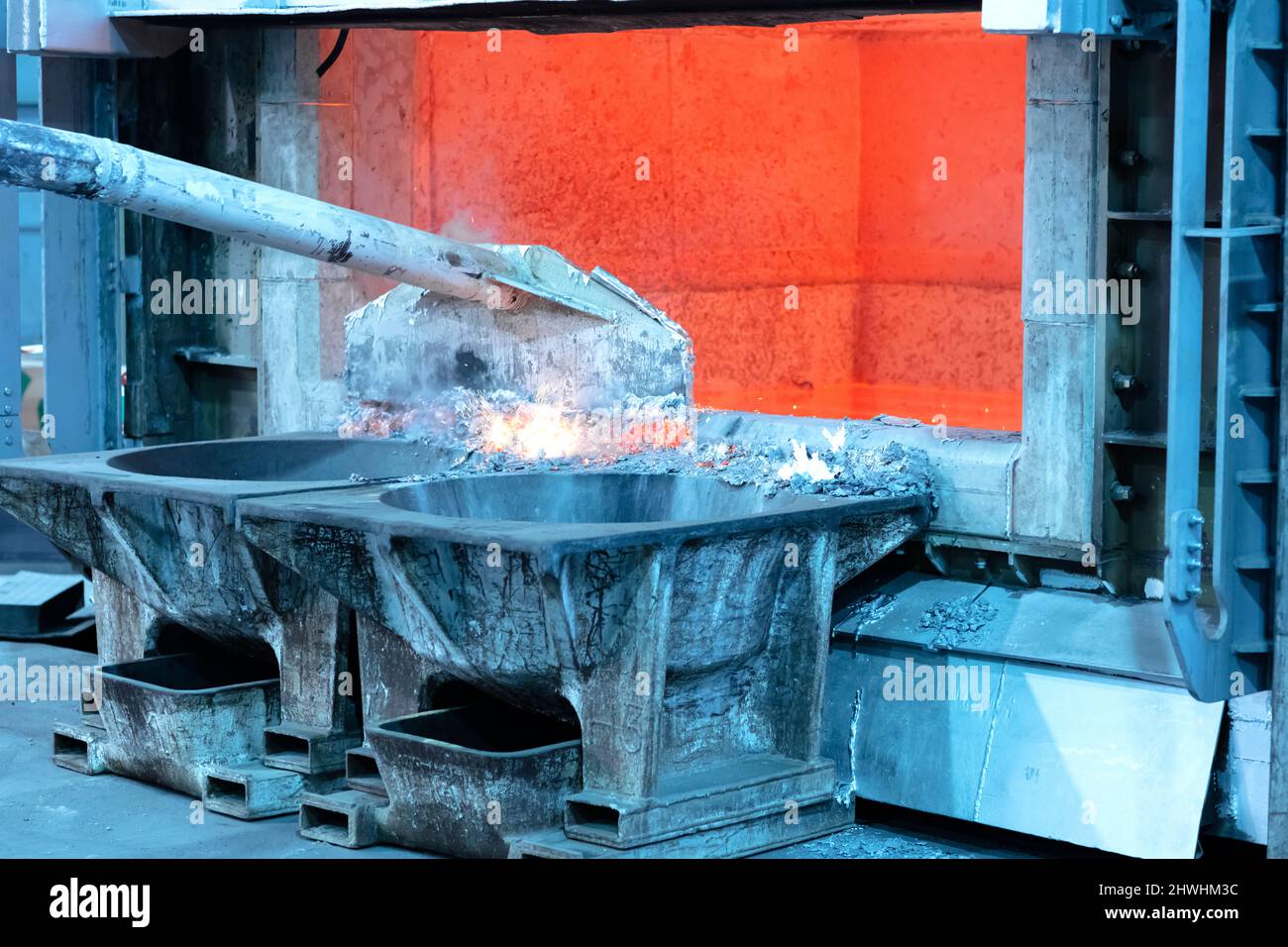How Aluminum Foundry Adds To Advancements in Aerospace Engineering
Aluminum shops are integral to innovations in aerospace design. They produce light-weight, high-strength elements that are essential for contemporary aircraft. Via sophisticated casting methods, these foundries create complicated geometries that boost architectural stability. Furthermore, the growth of remarkable Aluminum alloys supports the market's concentrate on gas effectiveness and sustainability. Difficulties remain in the manufacturing process. Understanding these aspects discloses the extensive impact of Aluminum on aviation's future.
The Importance of Lightweight Materials in Aerospace Design
As the aerospace sector proceeds to advance, the importance of lightweight products comes to be significantly evident. The demand for effectiveness and sustainability drives designers to prioritize using materials that minimize general weight without jeopardizing architectural honesty. Light-weight products, specifically Aluminum, play a necessary role in improving gas effectiveness, enhancing payload capability, and enhancing the overall efficiency of aircraft.
The integration of these products permits for cutting-edge layouts, making it possible for manufacturers to develop even more aerodynamic shapes that can stand up to severe conditions. The reduction in weight not only lowers operational prices yet likewise adds to a lowered ecological impact, aligning with international initiatives towards sustainability in aeronautics.
Advanced Casting Techniques in Aluminum Foundries
Advanced casting techniques in Aluminum foundries play a vital function in aerospace engineering by making it possible for the manufacturing of light-weight and exact elements. Advancements in mold style and precision casting procedures are essential in attaining ideal performance and architectural honesty. In addition, the growth of lightweight alloys enhances the total performance and performance of aerospace applications.
Ingenious Mold Style
Innovative mold and mildew style plays an essential duty in the performance and efficiency of Aluminum foundries, particularly within the aerospace field. By leveraging advanced products and strategies, modern molds can be engineered to stand up to high temperatures and stress, making sure peak efficiency during the spreading procedure. These designs often integrate complicated geometries that permit the manufacturing of lightweight yet structurally sound elements, crucial for aerospace applications. In addition, the use of computer-aided layout (CAD) software assists in accurate modeling, making it possible for shops to simulate and refine mold and mildew layouts prior to physical manufacturing starts. This not only enhances the top quality of actors parts but also decreases waste and lead times, leading to considerable price savings. Overall, ingenious mold layout is a foundation of development in Aluminum Foundry technology for aerospace engineering.
Precision Casting Processes
The efficiency of innovative mold and mildew layouts perfectly incorporates with precision casting processes, which are vital for creating top notch Aluminum parts in aerospace design. These procedures, consisting of sand casting, die spreading, and financial investment spreading, guarantee the creation of intricate geometries with tight tolerances. Advanced strategies like vacuum cleaner casting and stress pass away casting improve the honesty and surface coating of the end products. Precision casting reduces product waste while optimizing the mechanical homes of Aluminum, vital for aerospace applications. On top of that, utilizing real-time tracking and progressed simulation devices during the spreading procedure permits instant modifications, resulting in boosted high quality control. Jointly, these accuracy spreading processes position Aluminum factories at the forefront of aerospace innovation, supporting the industry's demand for reliability and performance.
Lightweight Alloy Growth
As aerospace engineers look for to improve gas performance and performance, lightweight alloy growth comes to be a vital focus in Aluminum shops. These foundries employ innovative spreading strategies to develop alloys that supply remarkable strength-to-weight ratios. Innovations in alloy make-up, consisting of the incorporation of aspects like lithium and magnesium, allow the production of products that stand up to extreme conditions while reducing general airplane weight. Methods such as die casting and investment spreading help with the accuracy manufacturing of complicated shapes, which are important for aerospace applications. Furthermore, ongoing study intends to maximize these alloys for enhanced mechanical properties and boosted longevity. By focusing on light-weight alloy advancement, Aluminum shops greatly add to the advancement of aerospace design, paving the method for much more reliable and sustainable aircraft layouts.

Enhancing Structural Stability Via Aluminum Components
Aluminum components provide substantial benefits in boosting structural integrity within aerospace engineering. Their lightweight nature contributes to overall efficiency while keeping strength, which is vital for airplane efficiency. In addition, the tension resistance residential properties of Aluminum aid assure the toughness and dependability of aerospace structures under various functional problems.
Lightweight Product Benefits
While typical materials frequently compromise weight for toughness, utilizing Aluminum components in aerospace engineering uses substantial benefits in structural integrity. Aluminum's lightweight nature adds to total design performance, enabling even more structured airplane that take in less gas, consequently enhancing sustainability. The product's excellent strength-to-weight proportion guarantees that components preserve longevity without including unneeded mass. This high quality fosters boosted performance and dexterity in flight, along with enhanced haul abilities. Furthermore, Aluminum's resistance to corrosion extends the life-span of aerospace structures, reducing maintenance prices and improving security. As manufacturers progressively adopt Aluminum alloys, the aerospace market experiences a transformative shift towards much more effective and effective design services that prioritize both efficiency and environmental duty.
Tension Resistance Residences
Various materials have one-of-a-kind properties, Aluminum's outstanding stress resistance stands out as an important aspect in boosting the architectural integrity of aerospace components. This resistance plays a vital duty in ensuring that aircraft can endure different functional stress and anxieties, consisting of exhaustion, influence, and environmental problems. Aluminum alloys, specifically crafted for aerospace applications, show high tensile toughness while keeping lightweight qualities, allowing engineers to create a lot more effective structures - Aluminum Foundry. Furthermore, the capability of Aluminum to withstand cyclic loading without considerable deformation adds to the durability and dependability of aerospace elements. As developments proceed in Aluminum Foundry strategies, the growth of stress-resistant Aluminum elements guarantees additional improvements in efficiency, safety and security, and effectiveness across the aerospace market, solidifying Aluminum's role as a preferred product in modern-day engineering
Fuel Efficiency Improvements Driven by Aluminum Innovations
As the aerospace industry looks for to boost gas performance, cutting-edge uses Aluminum have actually emerged as a crucial remedy. Aluminum's lightweight nature notably decreases airplane weight, allowing for reduced gas consumption throughout flight. This reduction in weight is vital, as even tiny decreases can result in significant enhancements in general fuel economy.
Advanced Aluminum alloys, developed for enhanced toughness and longevity, enable manufacturers to produce elements that maintain structural integrity while decreasing mass - Aluminum Foundry. Furthermore, the assimilation of Aluminum in airframes and engine parts assists in improved the rules of aerodynamics, contributing to lowered drag and enhanced effectiveness
The fostering of Aluminum in aerospace not only meets the demand for fuel-efficient layout but additionally aligns with regulative stress for lower emissions. As these innovations remain to progress, they play a significant duty in setting new benchmarks for fuel performance, making sure that the aerospace industry can satisfy growing ecological and financial challenges.

The Function of Aluminum in Sustainable Air Travel Practices
The boosting focus on lasting aeronautics practices has positioned Aluminum as a crucial product in the mission for greener airplane style. Understood for its light-weight buildings, Aluminum considerably decreases aircraft weight, resulting in lower fuel usage and exhausts. Its recyclability better boosts its sustainability account, as Aluminum can be reused forever without loss of high quality. This characteristic sustains a circular economic climate within the aviation sector, reducing waste and resource exhaustion.
Additionally, improvements in Aluminum alloys have improved their strength and deterioration resistance, permitting longer life span and reduced upkeep needs. These innovations promote the advancement of more reliable aircraft frameworks, adding to overall sustainability efforts. In addition, Aluminum's thermal conductivity plays a crucial duty in energy-efficient styles, boosting systems such as heat exchangers. Collectively, these attributes highlight Aluminum's pivotal function in advancing sustainable air travel, aligning with worldwide initiatives focused on reducing the ecological impact of air traveling.
Obstacles Dealt With by Aluminum Foundries in Aerospace Manufacturing
While Aluminum shops play an important role in aerospace manufacturing, they deal with considerable difficulties that can impact manufacturing efficiency and quality. One significant obstacle is the rigid quality assurance criteria called for in the aerospace market. Any kind of issue can compromise security and performance, necessitating strenuous evaluation processes that prolong manufacturing timelines. Furthermore, foundries frequently compete with changing resources expenses, which can impact pricing and earnings. The intricacy of Aluminum alloys used in aerospace applications further complicates the production process, as exact formulas are essential for achieving preferred mechanical residential properties. Skilled labor anonymous lacks impede the ability to preserve top quality production degrees. Finally, environmental regulations impose limitations on emissions and waste monitoring, requiring factories to invest in lasting techniques, which can be cost-prohibitive. These elements jointly create a landscape where Aluminum shops should continually adjust to fulfill the evolving demands of aerospace production while ensuring safety and compliance.
Future Patterns in Aluminum Applications for Aerospace Design
With developments in modern technology and increasing demands for see this site effectiveness, the future of Aluminum applications in aerospace engineering is positioned for considerable makeover. The integration of ingenious Aluminum alloys and compounds is expected to enhance strength-to-weight ratios, bring about even more fuel-efficient airplane styles. On top of that, improvements in additive production techniques will allow for the production of complicated Aluminum structures that were formerly impossible, maximizing efficiency and minimizing waste.

Sustainable methods will certainly play an essential function, with an expanding focus on reusing Aluminum to reduce ecological influence. The aerospace sector is likely to embrace smarter producing processes, such as automation and expert system, making certain higher high quality and precision in Aluminum components. Collaborations in between Aluminum factories and aerospace firms will certainly cultivate research and development, leading the means for new applications that meet the strict demands of modern-day aerospace design. On the whole, the future looks assuring for Aluminum's function fit the skies
Frequently Asked Inquiries
What Are the Environmental Effects of Aluminum Production in Aerospace?
The environmental impacts of Aluminum production in aerospace consist of considerable energy intake, greenhouse gas emissions, and environment disruption. In addition, mining processes can result in dirt deterioration and water contamination, elevating worries regarding sustainability and ecological equilibrium.
Exactly How Does Aluminum Compare to Other Materials in Aerospace Applications?
Aluminum uses an unique combination of lightweight residential properties, corrosion resistance, and cost-effectiveness contrasted to other materials. Its high strength-to-weight proportion makes it particularly beneficial for aerospace applications, enhancing gas effectiveness and overall efficiency in aircraft layout.
What Credentials Do Aluminum Foundry Employees Requirement for Aerospace Projects?
Aluminum Foundry workers need customized training in metallurgy and spreading methods, along with understanding of aerospace market standards. Certifications in high quality control and security read here procedures are also important to ensure conformity with stringent aerospace task requirements.
Exist Any Safety And Security Worry About Utilizing Aluminum in Aerospace Engineering?
Security concerns regarding Aluminum in aerospace engineering consist of vulnerability to tiredness, deterioration, and stress and anxiety cracks. Correct treatment and alloy selection are vital to minimize these risks, making sure architectural honesty and overall security in aerospace applications.
Exactly How Does Aluminum Recycling Benefit the Aerospace Sector?
Aluminum reusing significantly benefits the aerospace market by decreasing product prices, reducing environmental effect, and preserving energy. This sustainable practice boosts the sector's efficiency while advertising the usage of light-weight, high-performance parts in aircraft manufacturing.
Advanced casting techniques in Aluminum factories play an important function in aerospace engineering by allowing the production of light-weight and specific components. Innovative mold and mildew design plays an essential function in the efficiency and efficiency of Aluminum foundries, particularly within the aerospace sector. As aerospace engineers look for to improve fuel effectiveness and performance, lightweight alloy development becomes an important emphasis in Aluminum shops. Aluminum alloys, particularly crafted for aerospace applications, exhibit high tensile strength while keeping light-weight characteristics, making it possible for engineers to design more reliable structures. Partnerships between Aluminum shops and aerospace business will cultivate research study and development, leading the way for brand-new applications that satisfy the strict needs of contemporary aerospace engineering.